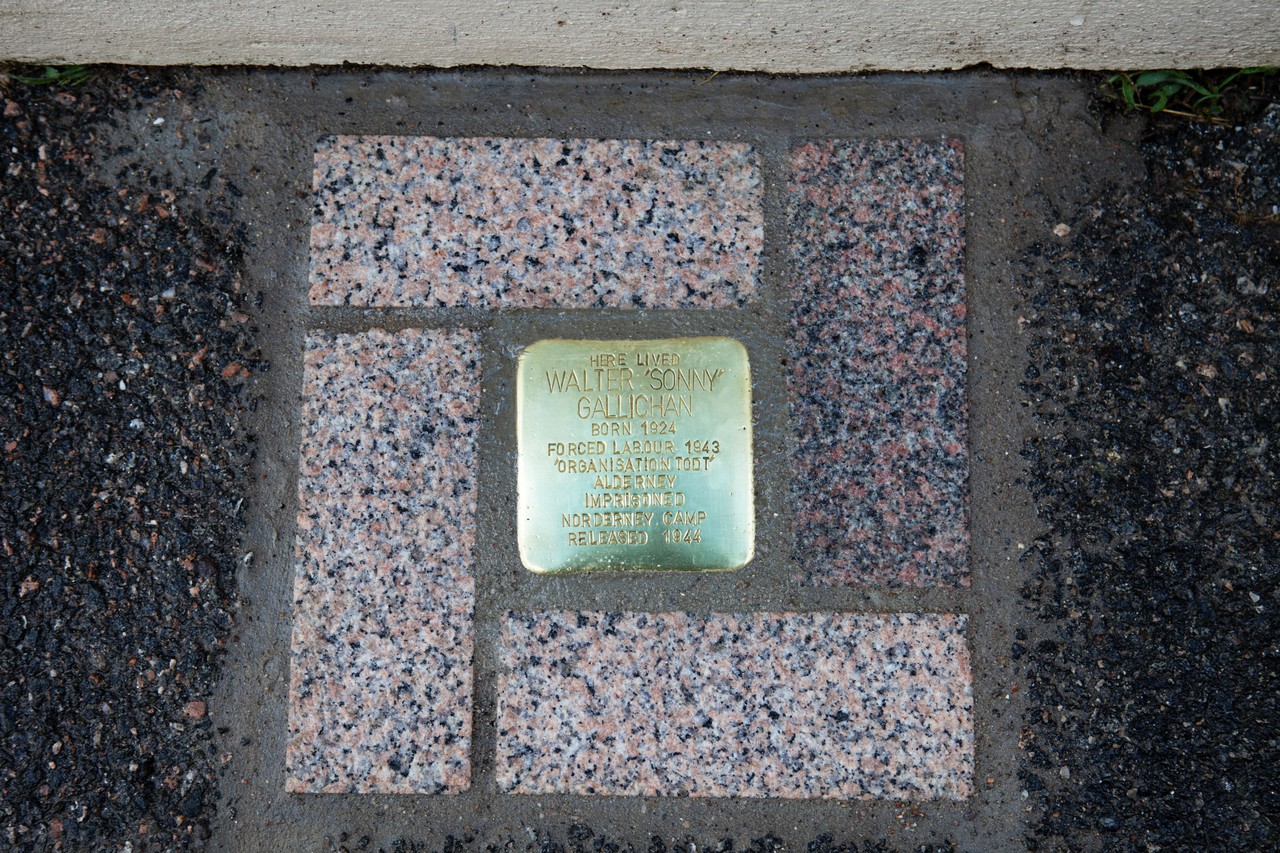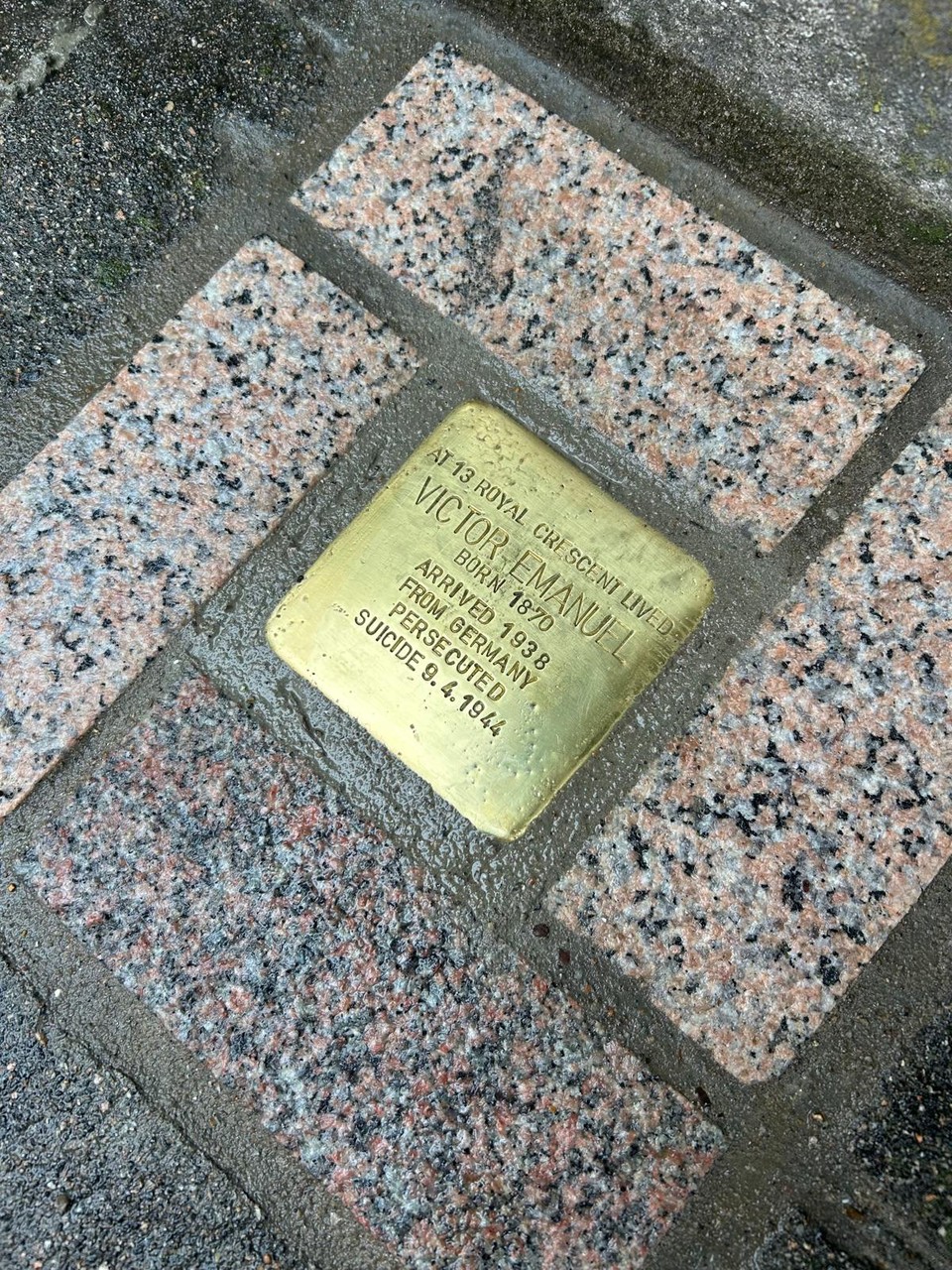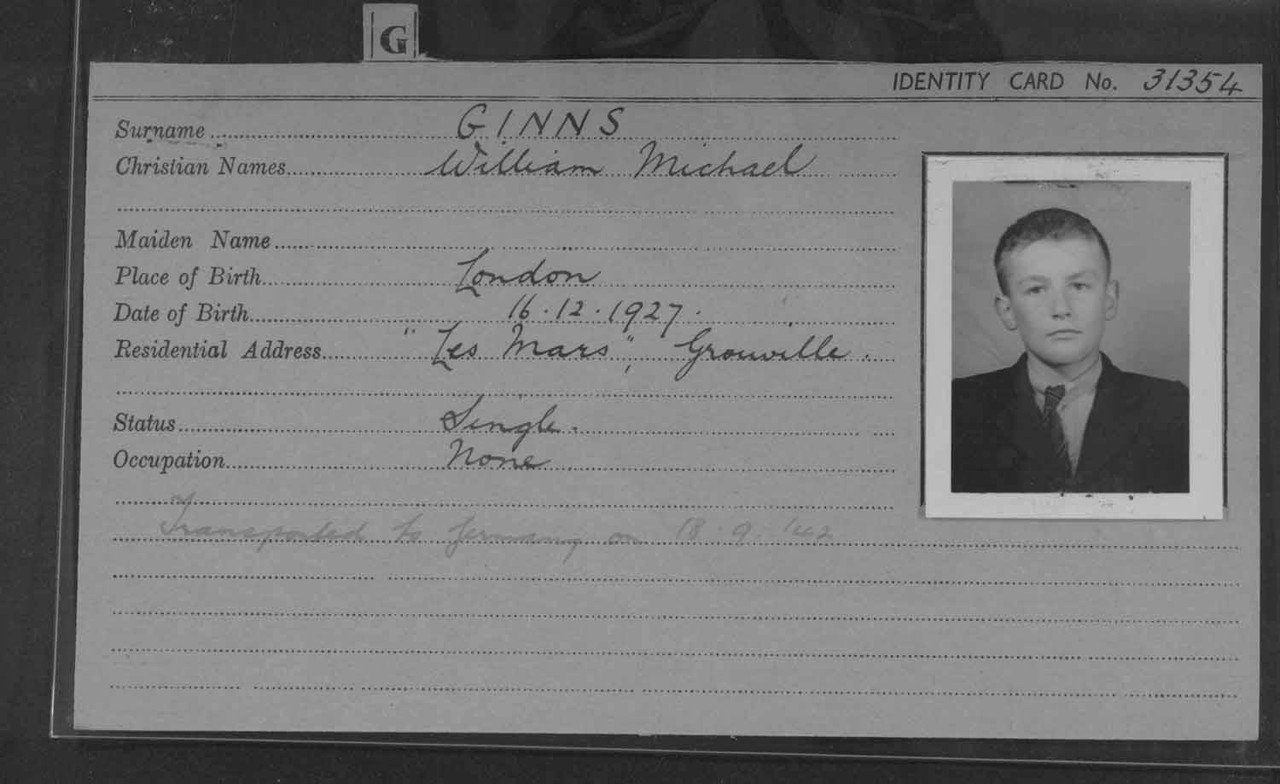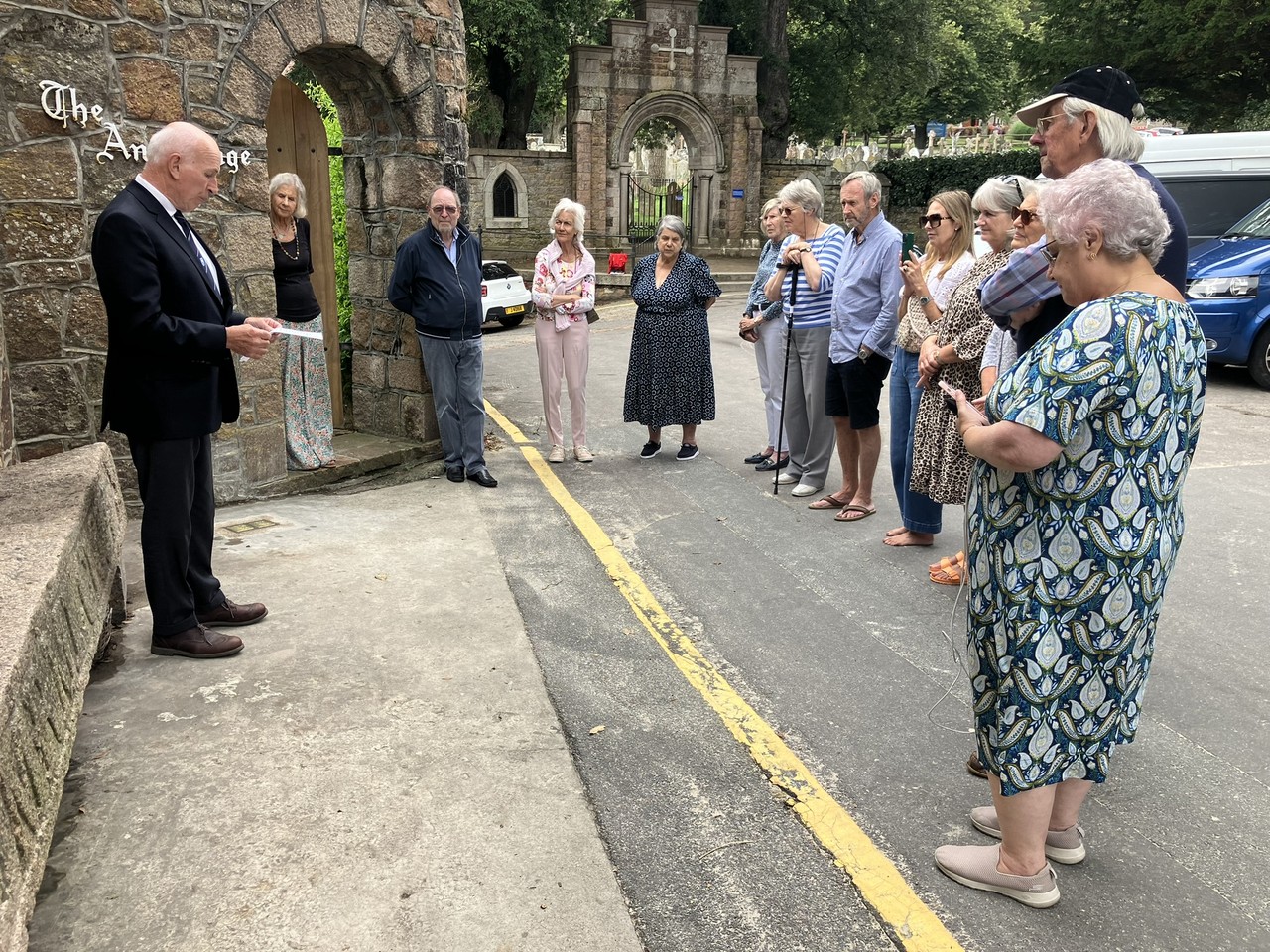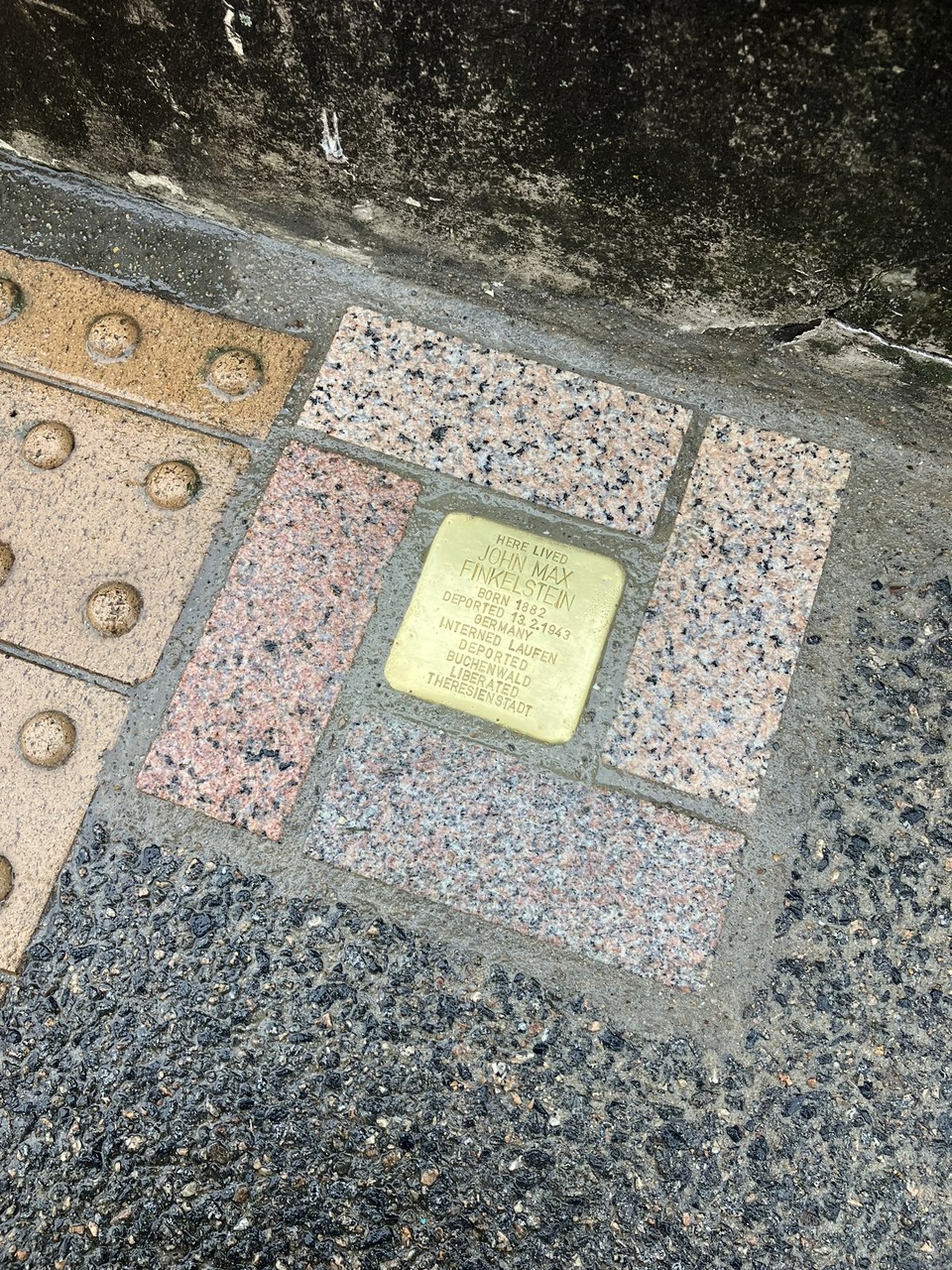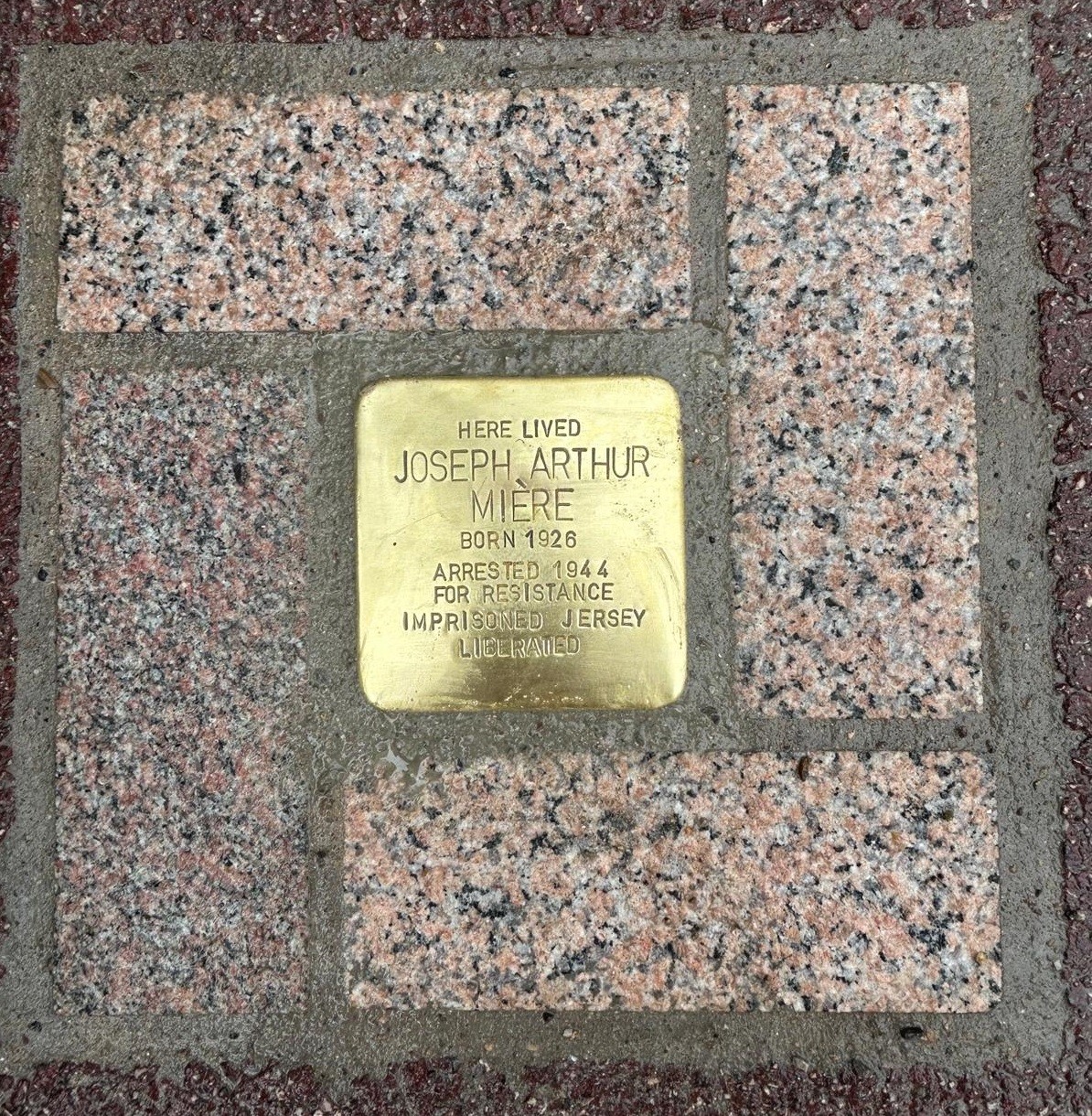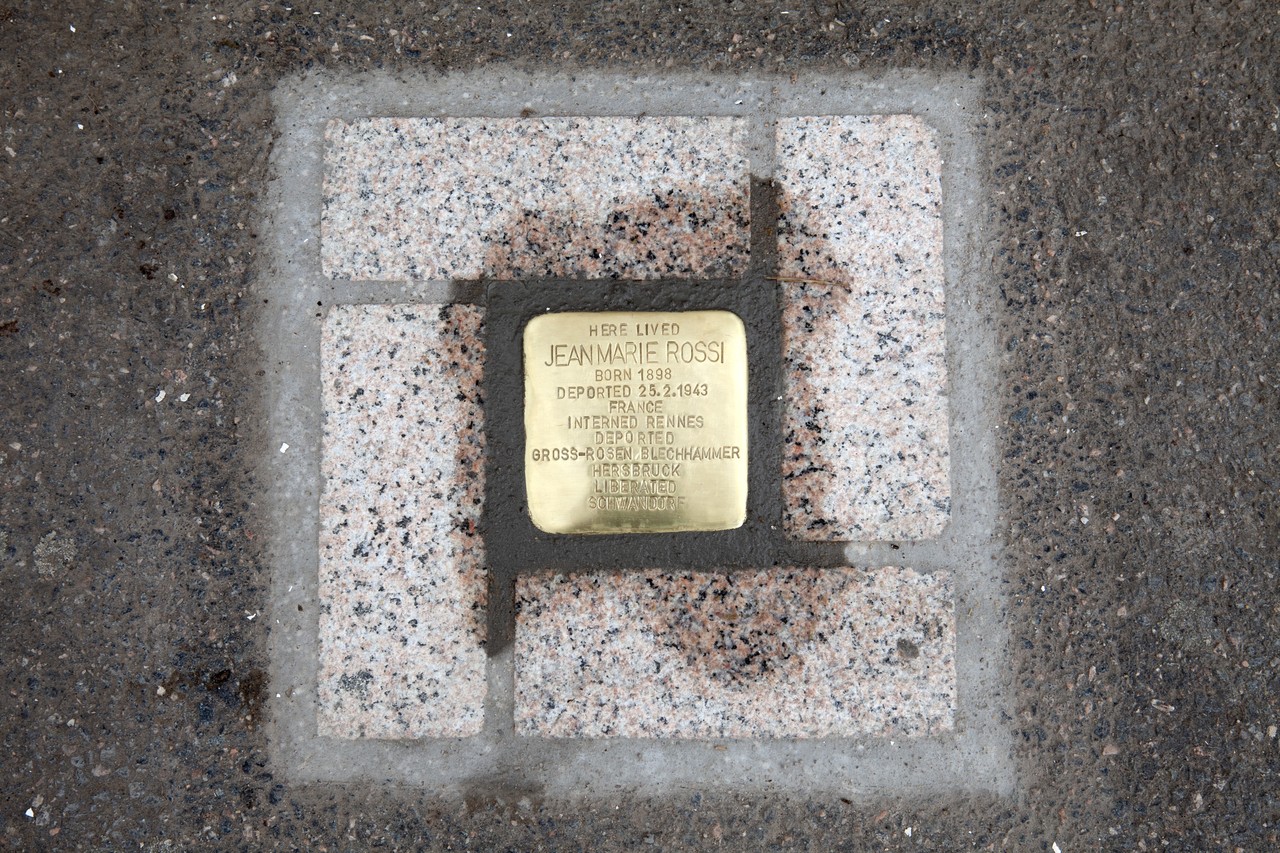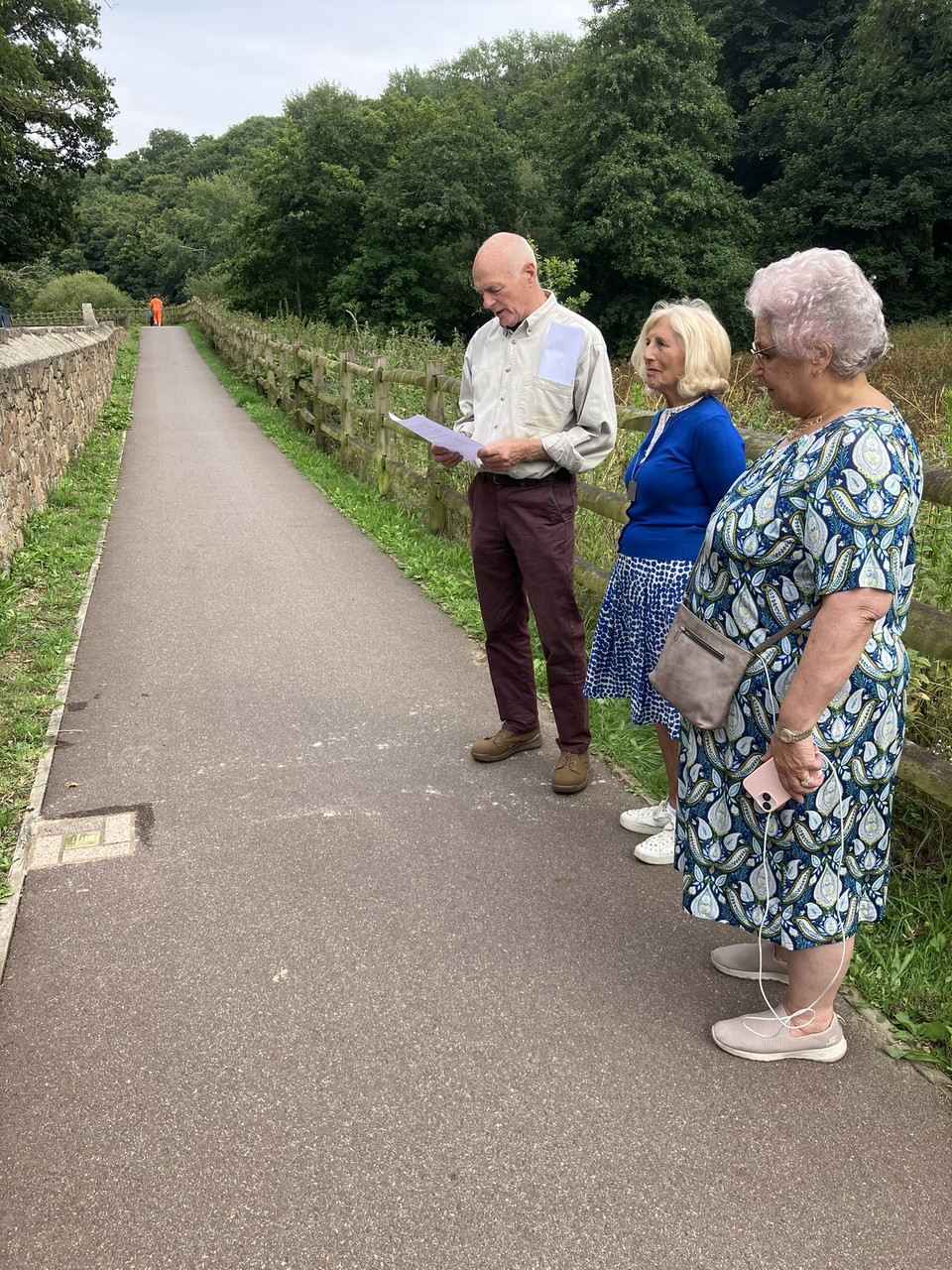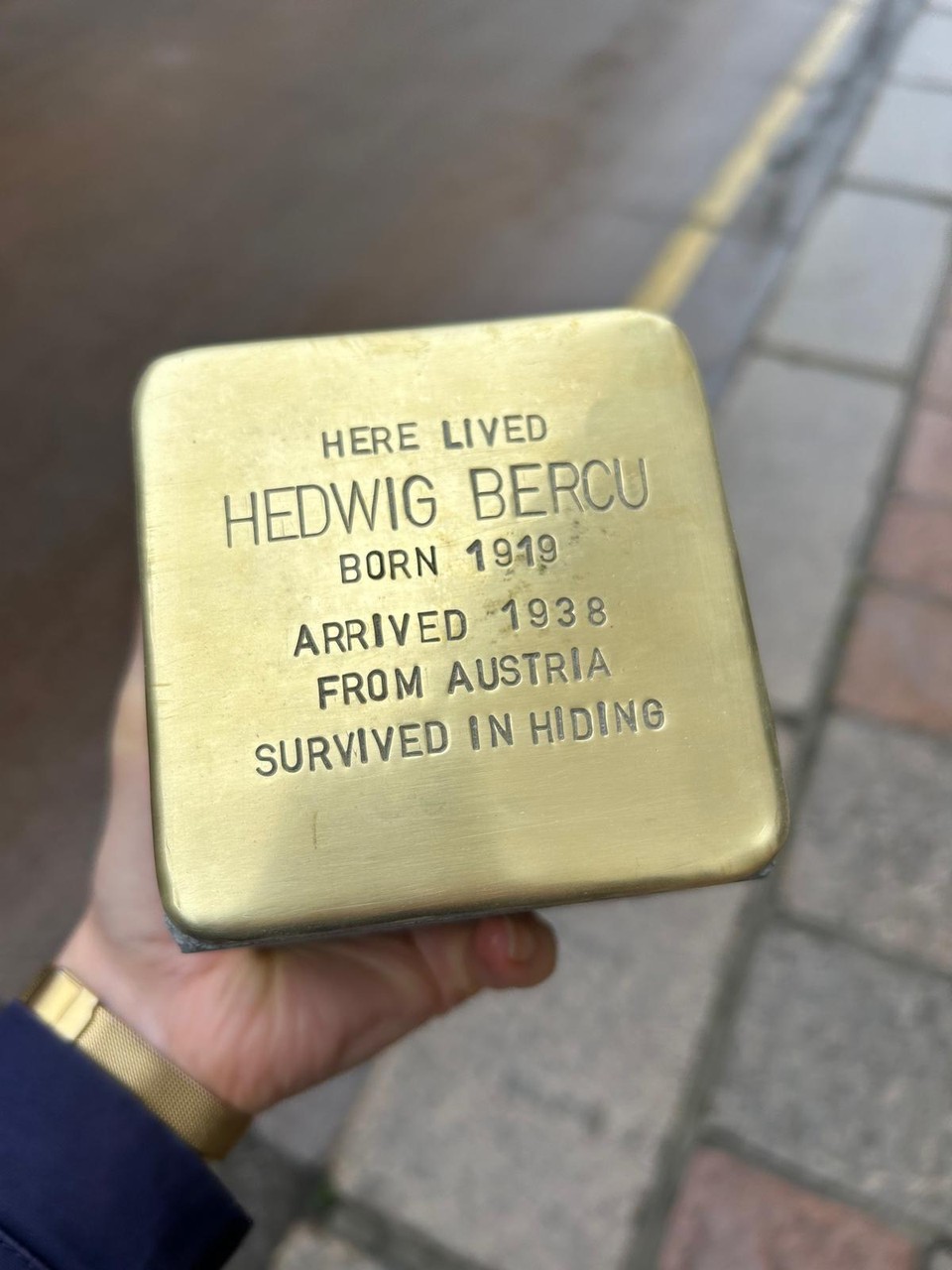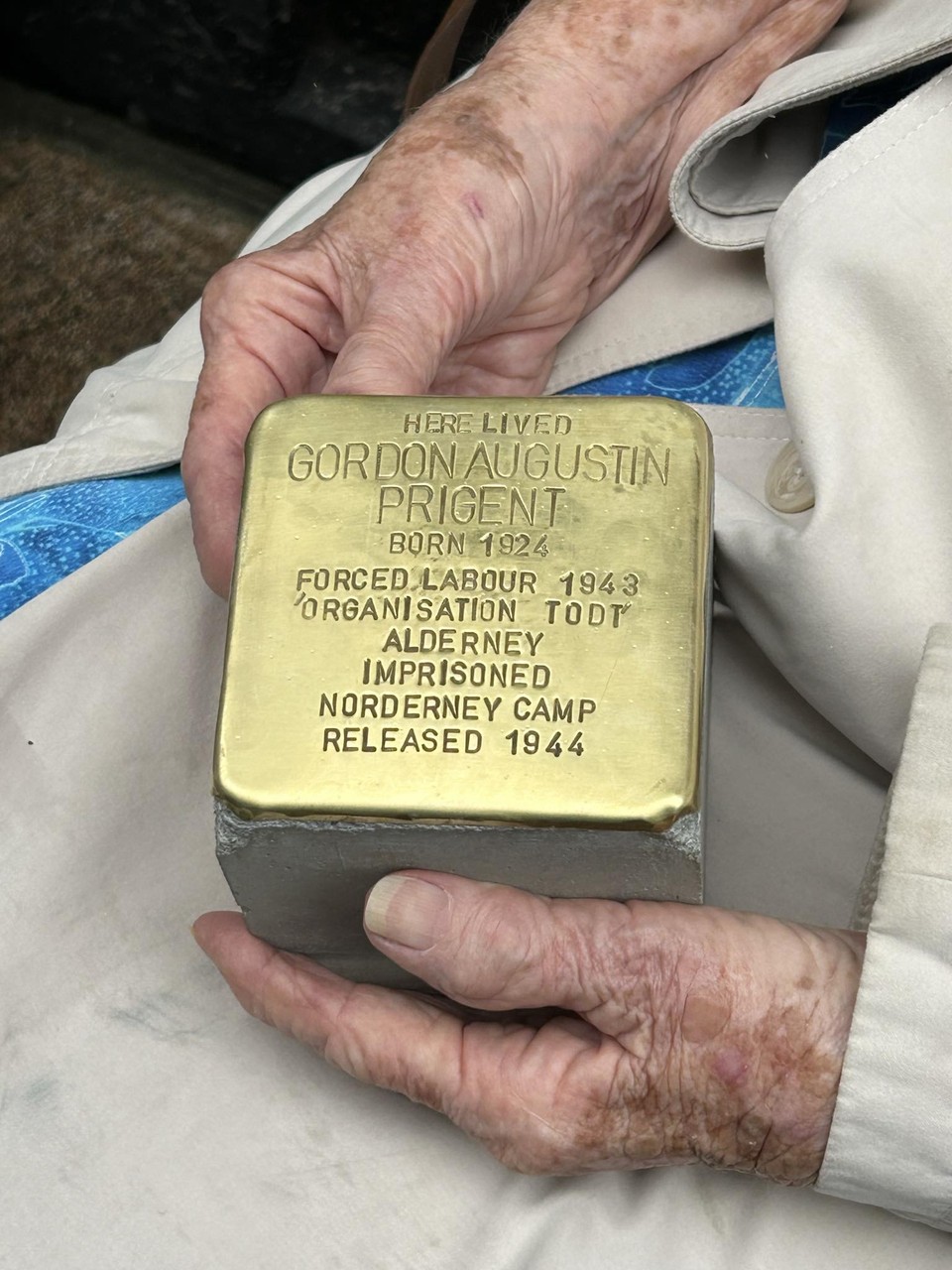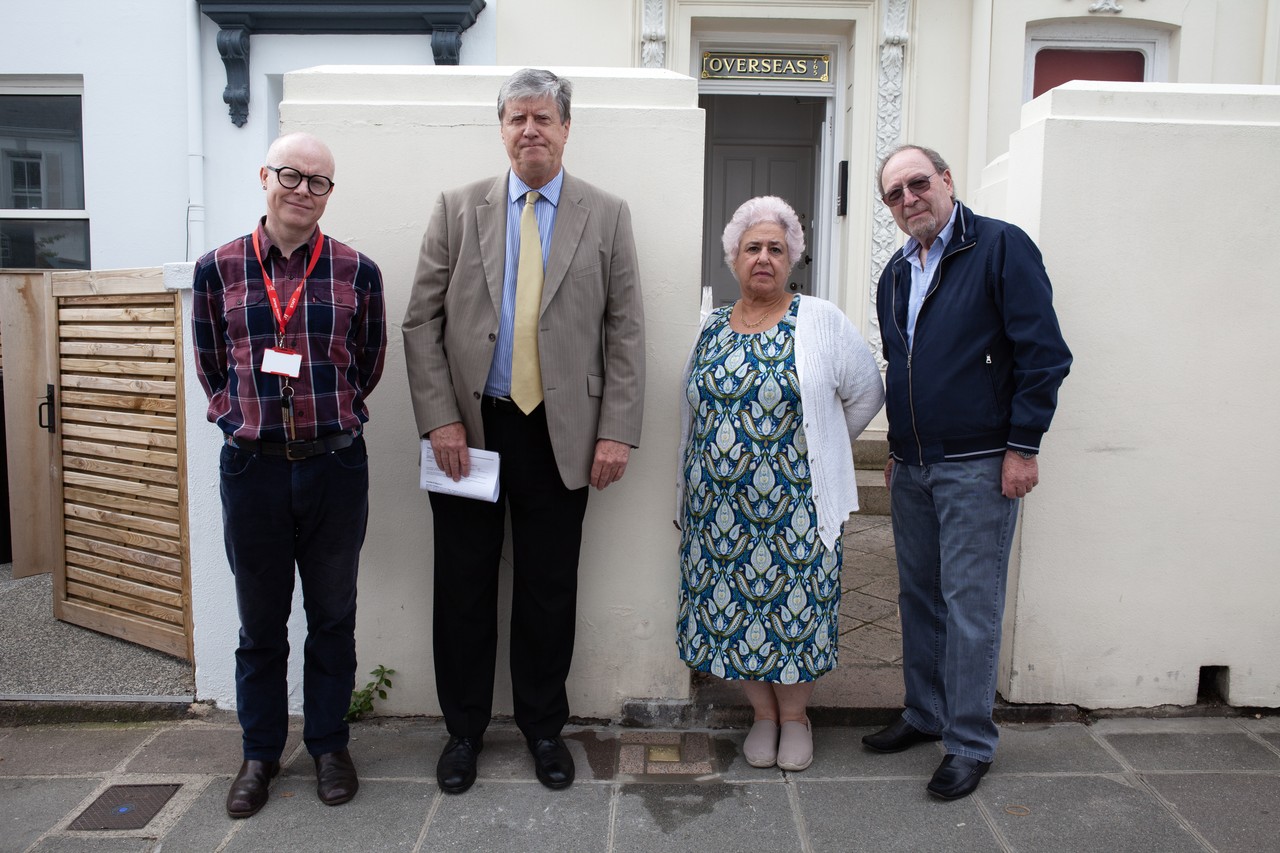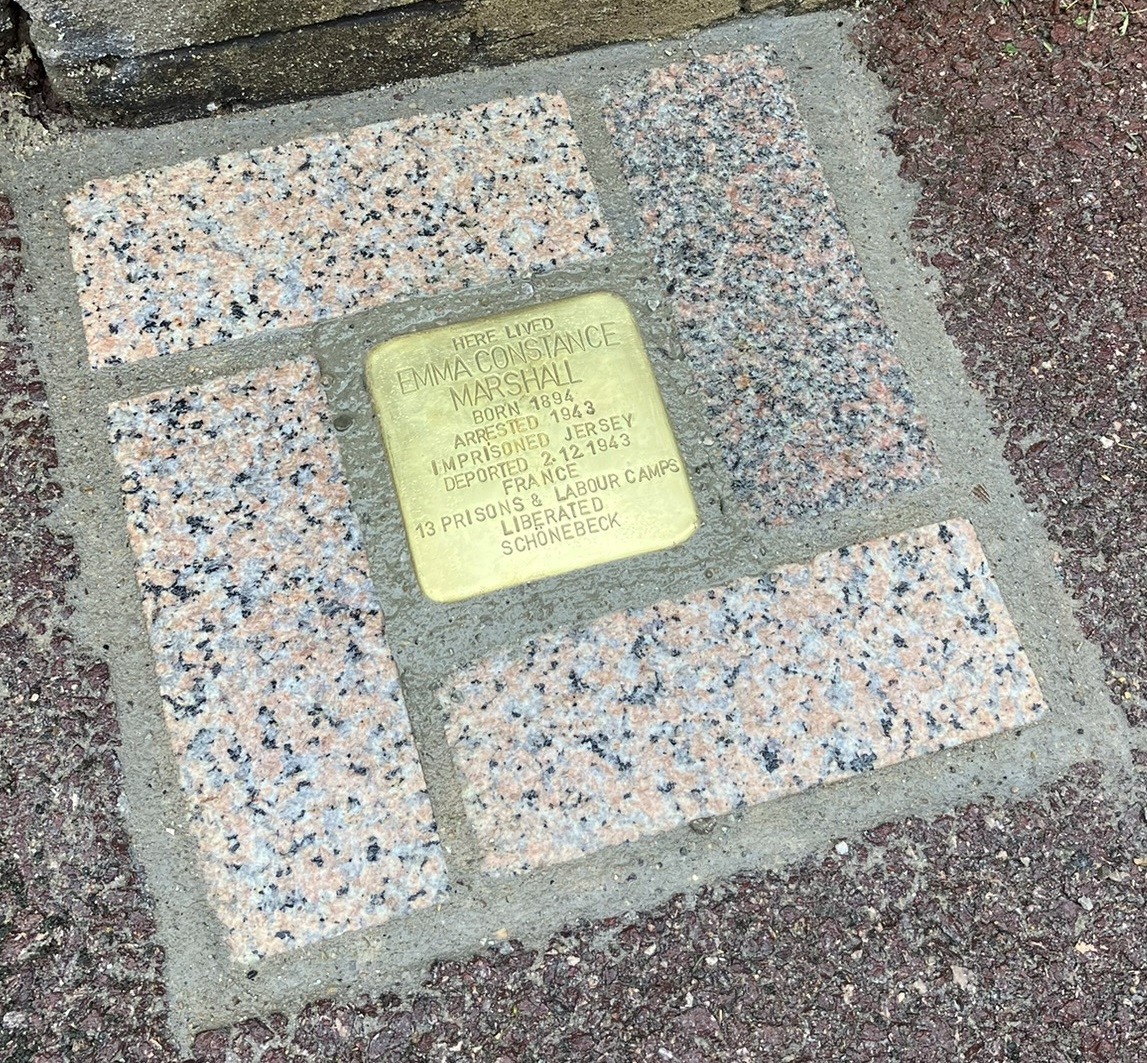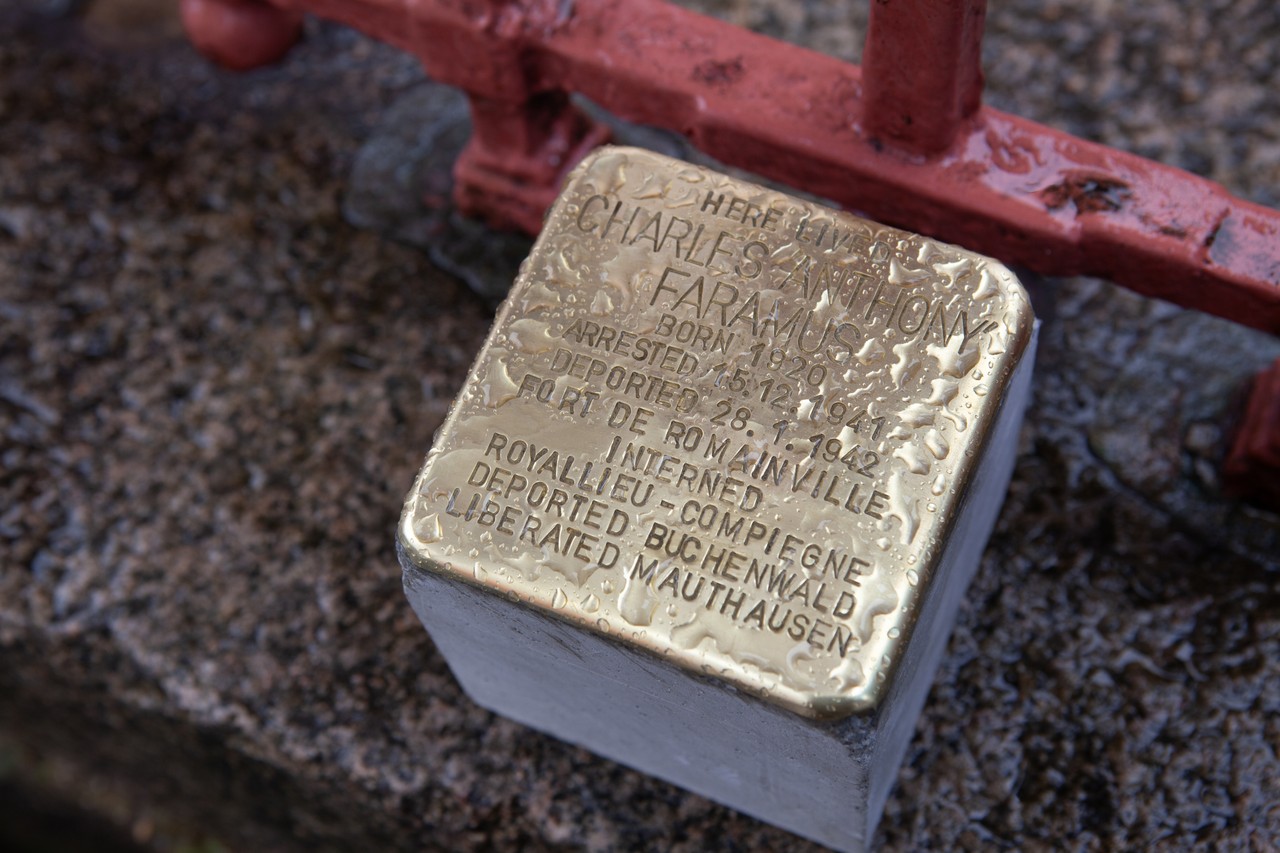In July 2024, twenty Stolpersteine – which translates as stumble stones – were laid in Jersey to remember civilians who were persecuted, imprisoned or deported during the German Occupation from 1 July 1940 to 9 May 1945.
The Stolpersteine project was initiated by German artist Gunter Demnig in 1992. He began laying small commemorative brass plaques, mounted on cast blocks, in German pavements outside the last known addresses of victims and survivors of Nazism. They include Jews, Romani and Sinti, homosexuals, and those murdered in the so-called ‘euthanasia’ programme which targeted those seen as disabled or mentally ill.
One metaphorically ‘stumbles across’ Stolpersteine; they are small and unobtrusive and often discovered by chance, only recognisable when passing by at close distance. In contrast to most memorials which, according to Gunter, one can easily miss, avoid, or become blind to, Stolpersteine represent a much deeper intrusion of memory into everyday life. One must bend down or crouch to read their memorial text, indicating a greater effort and thus, commitment to remember on the part of the viewer, and this is intentional.
In 2022, at an event at the Wiener Holocaust Library, London, Cambridge University Professor Gilly Carr was invited to speak alongside Gunter Demnig. She learned of his desire to travel to the Channel Islands to lay stones. She had long hoped to see these stones laid in Jersey and Guernsey and so in 2023 she proposed the concept to Jersey Heritage and Guernsey Museums. Both organisations took it up enthusiastically.
Now that they have been installed, the Jersey Stolpersteine raise awareness of Islanders who were persecuted for their Jewish origins or went into hiding for that reason, those convicted of acts of resistance, defiance, or attempted escape, and individuals sent to Alderney as forced labourers or interned in Germany due to being British born. This trail will help you find the locations of all the Stolpersteine and provide detailed biographies for each person. The trail itself is in two parts, one to the east of the Island and one to the west. These sections can be done in the same day or divided over multiple days, and it is recommended to walk or use public transport between the two routes.
